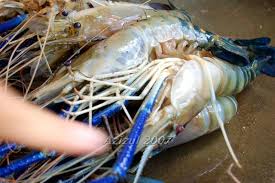

Habitat availability.
Population status.
 The species of Aquilaria malaccensis currently listed in Appendix II has been considered threatened according to the IUCN Red List. Species considered to be globally at risk from overexploitation for agarwood include: A. beccariana (Vulnerable), A. hirta (Vulnrable) and A. microcarpa (Vulnerable) (Hilton-Taylor, 2002). No current information on population is available. Listing one species out of more than 15 species producing agarwood appeared to create worldwide problems on look alike products in trade (Soehartono, 2003). This is because the specimens in trade are in the forms of wood chips, powder and oils. When the collectors are looking for agarwood, all agarwood producing species they found will be harvested, not only the A. malaccensis. It is then very difficult to distinguish whether the products in trade are derived from Aquilaria or Gyrinops. Therefore, virtually all species of Aquilaria and Gyrinops are threatened by trade (Soehartono and Mardiastuti, 2002).
The species of Aquilaria malaccensis currently listed in Appendix II has been considered threatened according to the IUCN Red List. Species considered to be globally at risk from overexploitation for agarwood include: A. beccariana (Vulnerable), A. hirta (Vulnrable) and A. microcarpa (Vulnerable) (Hilton-Taylor, 2002). No current information on population is available. Listing one species out of more than 15 species producing agarwood appeared to create worldwide problems on look alike products in trade (Soehartono, 2003). This is because the specimens in trade are in the forms of wood chips, powder and oils. When the collectors are looking for agarwood, all agarwood producing species they found will be harvested, not only the A. malaccensis. It is then very difficult to distinguish whether the products in trade are derived from Aquilaria or Gyrinops. Therefore, virtually all species of Aquilaria and Gyrinops are threatened by trade (Soehartono and Mardiastuti, 2002).
Aquilaria and Gyrinops are typical understorey tree. Pattern of seedling distribution indicates that few seeds are dispersed more than a few meters from the adult tree. Under nursery conditions, seeds of Aquilaria spp. germinated rapidly and a relatively high proportion of seed eventually germinated (more than 50%).
Formerly only infected agarwood producing trees were harvested, however recently when the infected agarwood trees are not easily found, the healthy plants were also cut down eventhough only a low quality of agarwoods were obtained.
The field data on the population trend is not available. However, the trade in the gaharu products seems to be declining. Indonesia exported more than 300 tons in 1997, dropped to 125 tons for what so called Aquilaria filaria. Since 2003 the quota remains at the level of 125 tons for the species.
Geographic trends


Demand on agarwood is increasing for years. Indonesia regulate export of agarwood through yearly quotas. There are two different groups of export quota from Indonesia, Aquilaria malaccensis group (including A. hirta, A. beccariana and A. microcarpa) from western part of the country and A. cumingiana and Aquilaria audate group (including Gyrinops versteegii) from eastern part of the country.
 In Malaysia, producing agarwood species are A. hirta and A. beccariana. Trades in agarwood are originated from Peninsular Malaysia, Sarawak and Sabah. In Sabah, activities of gaharu collectors was a major threat to the area, as not only did the collectors cut down potential agarwood-producing trees. Most Aquilaria trees found in this area had either already felled or had been ‘notched”.
In Malaysia, producing agarwood species are A. hirta and A. beccariana. Trades in agarwood are originated from Peninsular Malaysia, Sarawak and Sabah. In Sabah, activities of gaharu collectors was a major threat to the area, as not only did the collectors cut down potential agarwood-producing trees. Most Aquilaria trees found in this area had either already felled or had been ‘notched”.Vietnam and Cambodia have also been important sources of agarwood to supply international markets. However, the proportion of how much the countries have been supplying international markets is unknown.
Role of the species in its ecosystem
 Aquilaria species have adapted to live in various habitats, including those that are rocky, sandy or calcareous, well-drained slopes and ridges and land near swamps. This shade tolerant plants when young may regenerate in almost pure patches underneath mother trees. Pattern and seedling distribution indicate that few seeds are distributed more than a few meters from the adult tree. The species are never found in a single dominant stands, but they are mostly been found in uneven dispersal throughout the habitat. Therefore, finding the tree (by collectors) would probably need special experiences.
Aquilaria species have adapted to live in various habitats, including those that are rocky, sandy or calcareous, well-drained slopes and ridges and land near swamps. This shade tolerant plants when young may regenerate in almost pure patches underneath mother trees. Pattern and seedling distribution indicate that few seeds are distributed more than a few meters from the adult tree. The species are never found in a single dominant stands, but they are mostly been found in uneven dispersal throughout the habitat. Therefore, finding the tree (by collectors) would probably need special experiences.Threats



Uncertainty about the size or age of trees when they contain agarwood has caused speculation that the current practice of harvesting adult trees is likely to be detrimental to the viability of the population.
 Identification problem for Aquilaria malaccensis in Brunei Darussalam suggested that possible exploitation of A. beccariana which has been confirmed to be A. audate in Brunei Darussalam.
Identification problem for Aquilaria malaccensis in Brunei Darussalam suggested that possible exploitation of A. beccariana which has been confirmed to be A. audate in Brunei Darussalam.Some species of Aquilaria. were reported to be found at national parks in Kalimantan such as Bukit Baka National Park, Gunung Palung National Park,Betung Kerihun National Park, Mandor Nature Reserve and Gunung Niut (Soehartono and Mardiastuti, 2002). However, at Gunung Palung, Gunung Niut and Mandor they are now almost completely depleted due to illegal logging and gold mining activities. Traders have confirmed that Aquilaria spp. are thought to be no longer in existence in Mandor area.
Indiscriminate felling of infected and uninfected trees and habitat degradation and loss due to forest fire and forest conversion to settlement and agriculture areas is another threats to agarwood species.

































































No comments:
Post a Comment